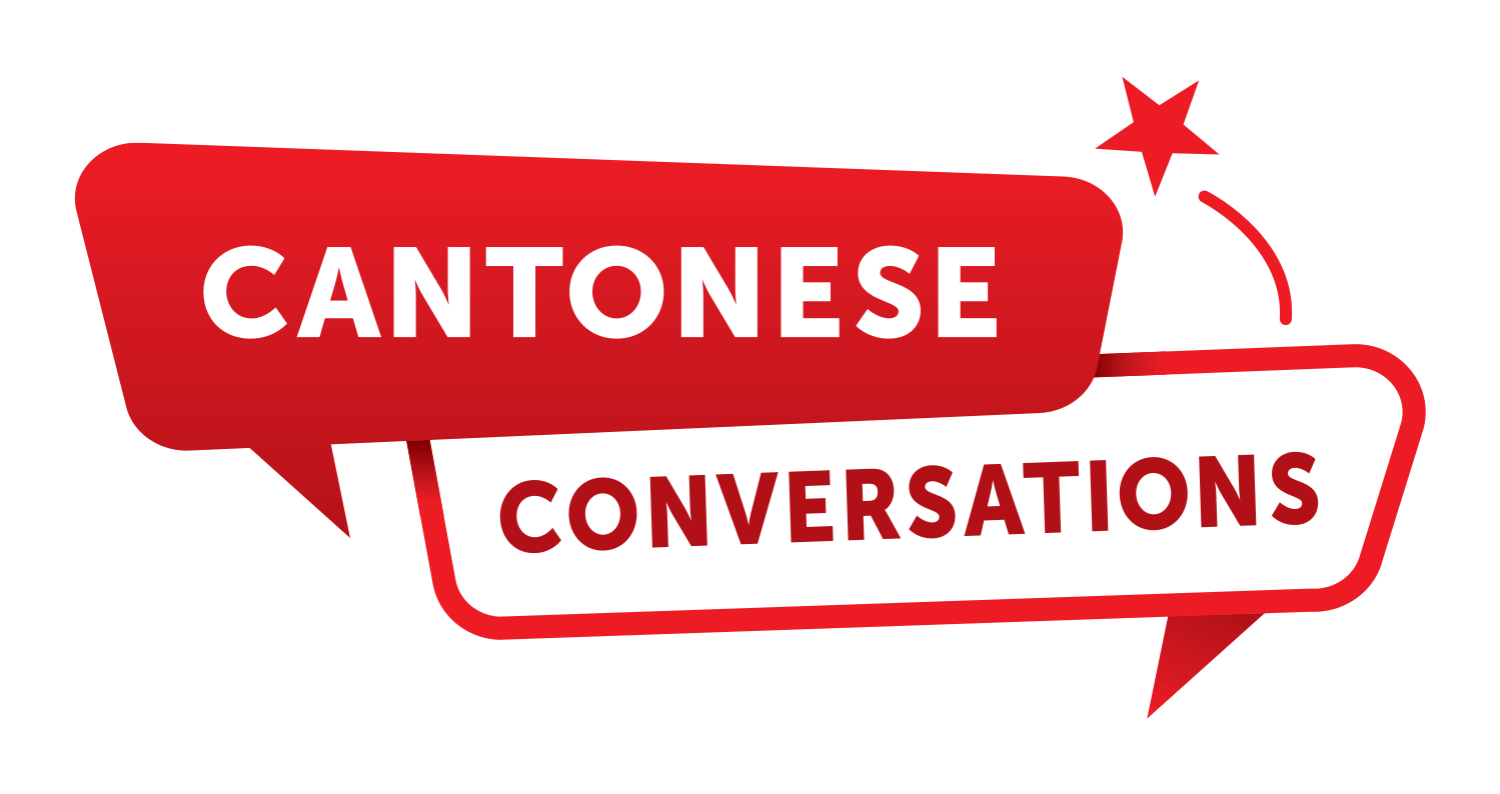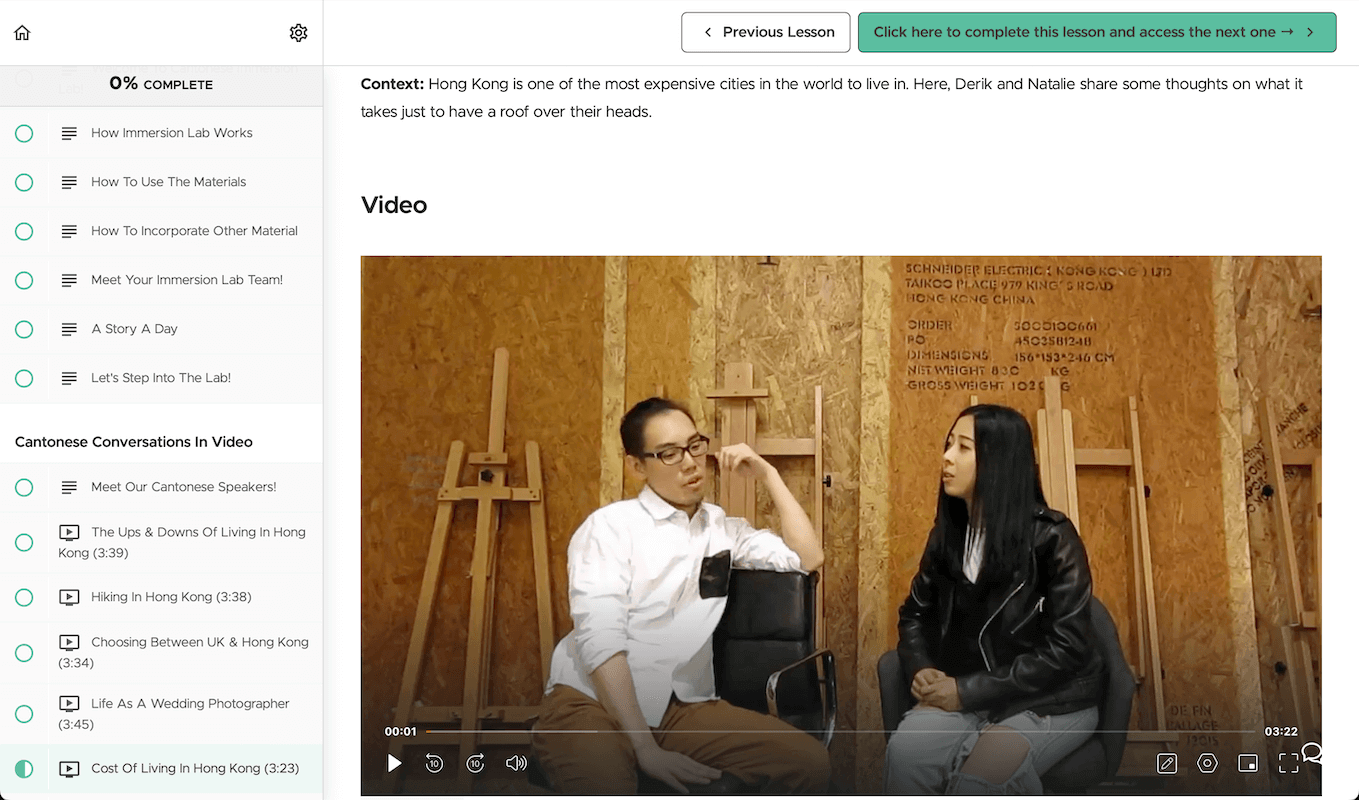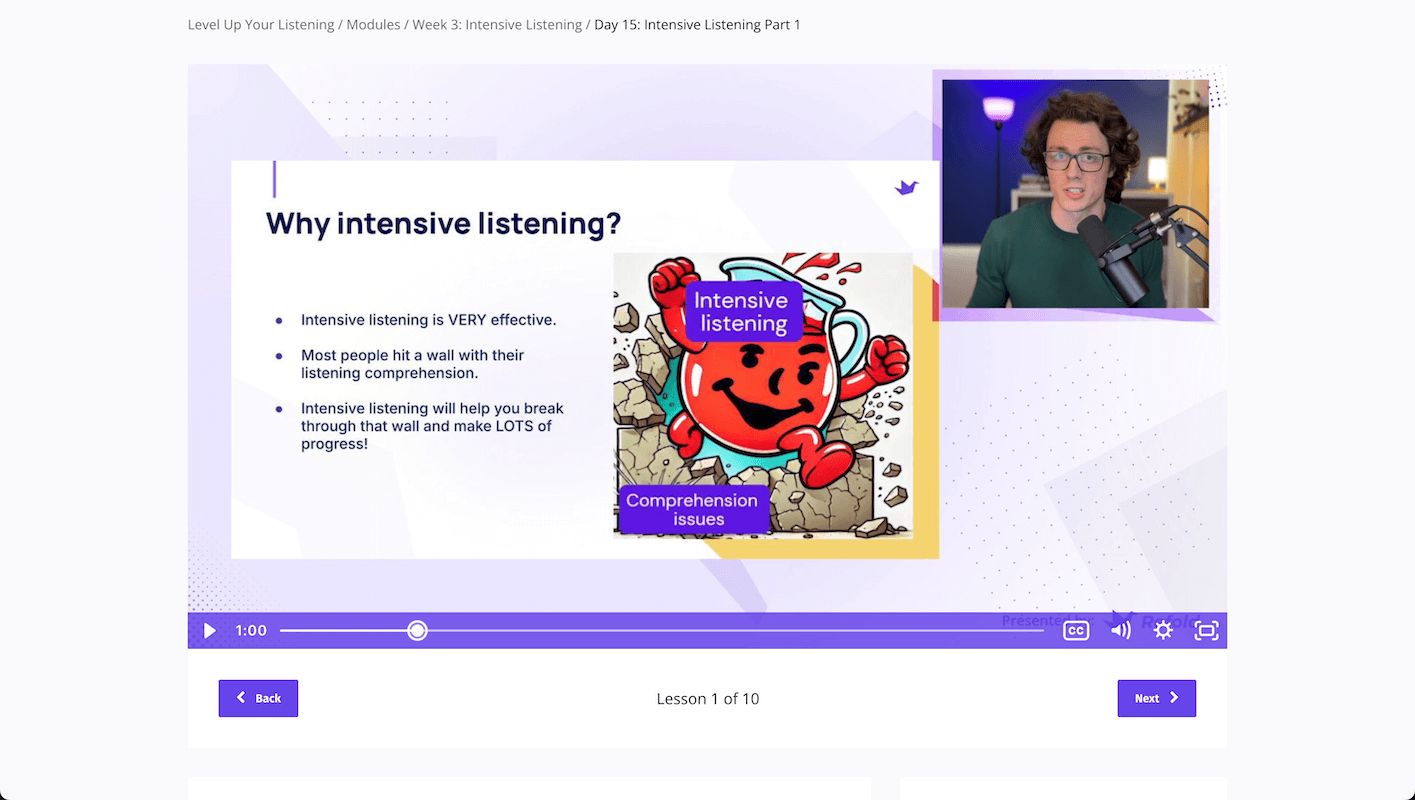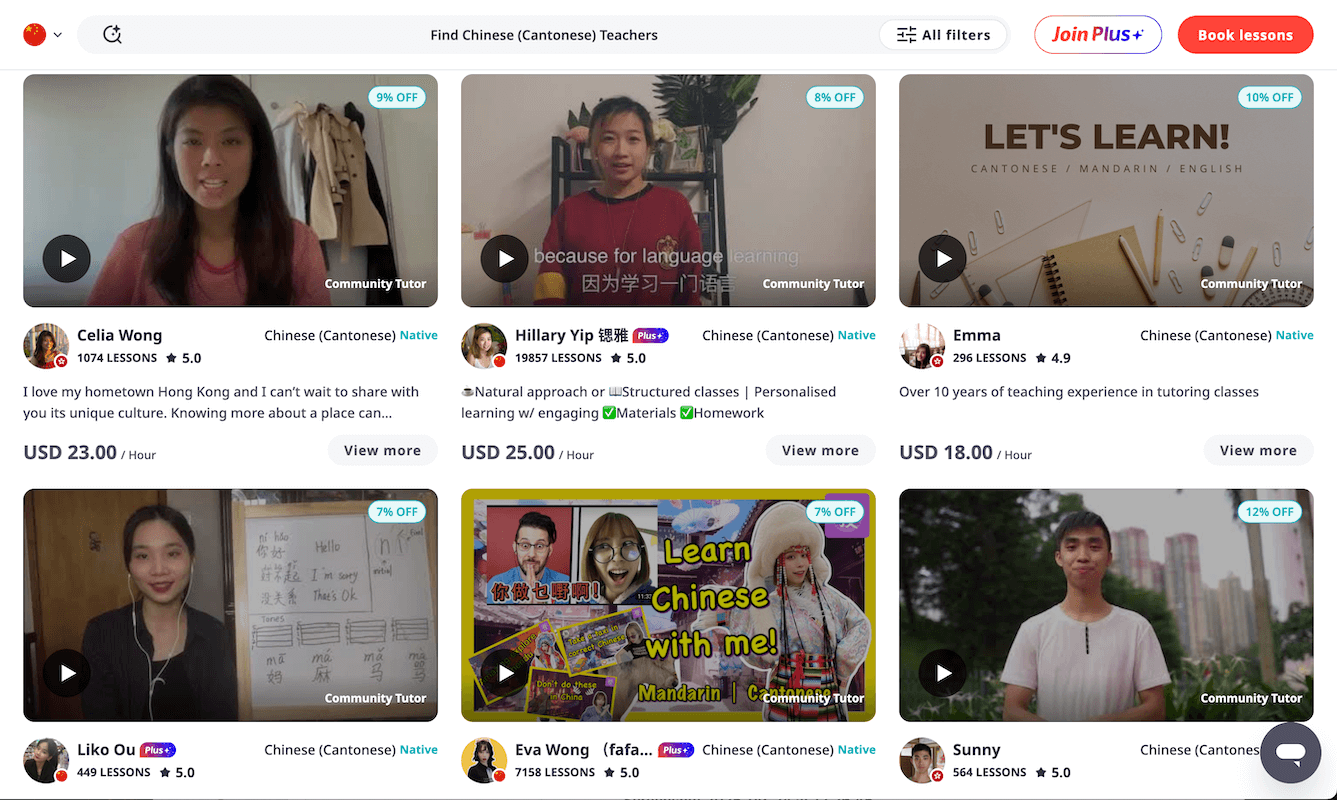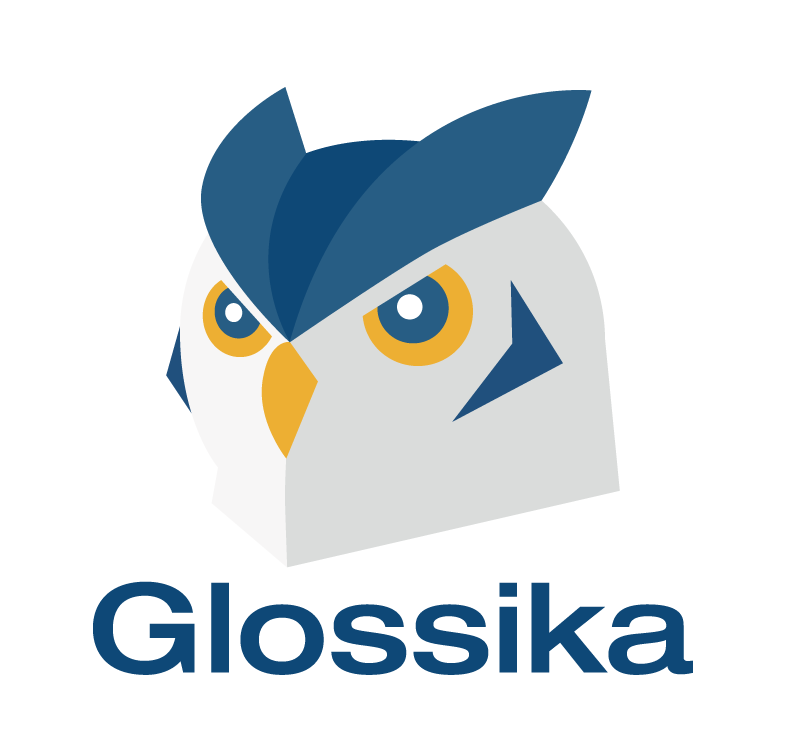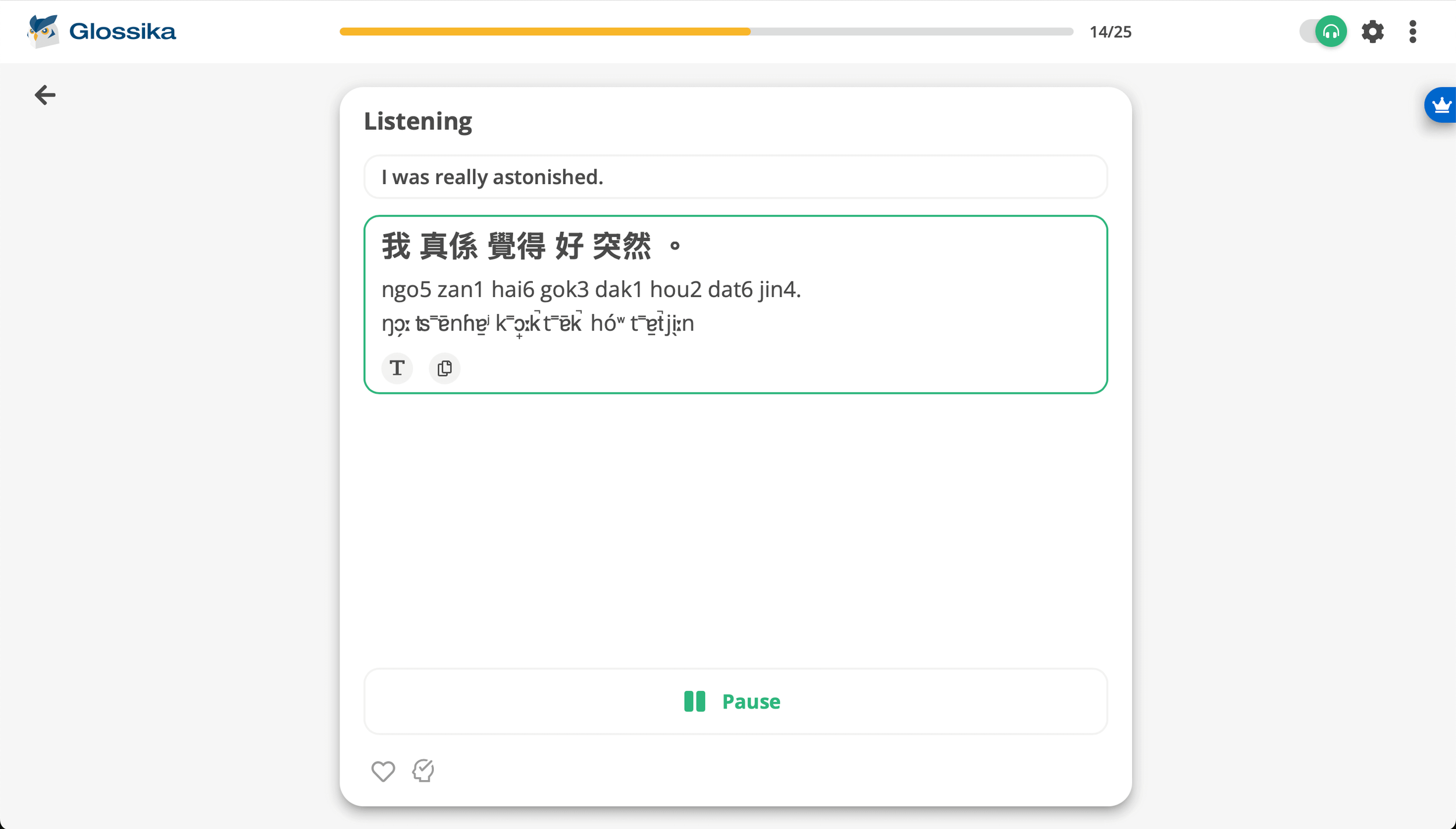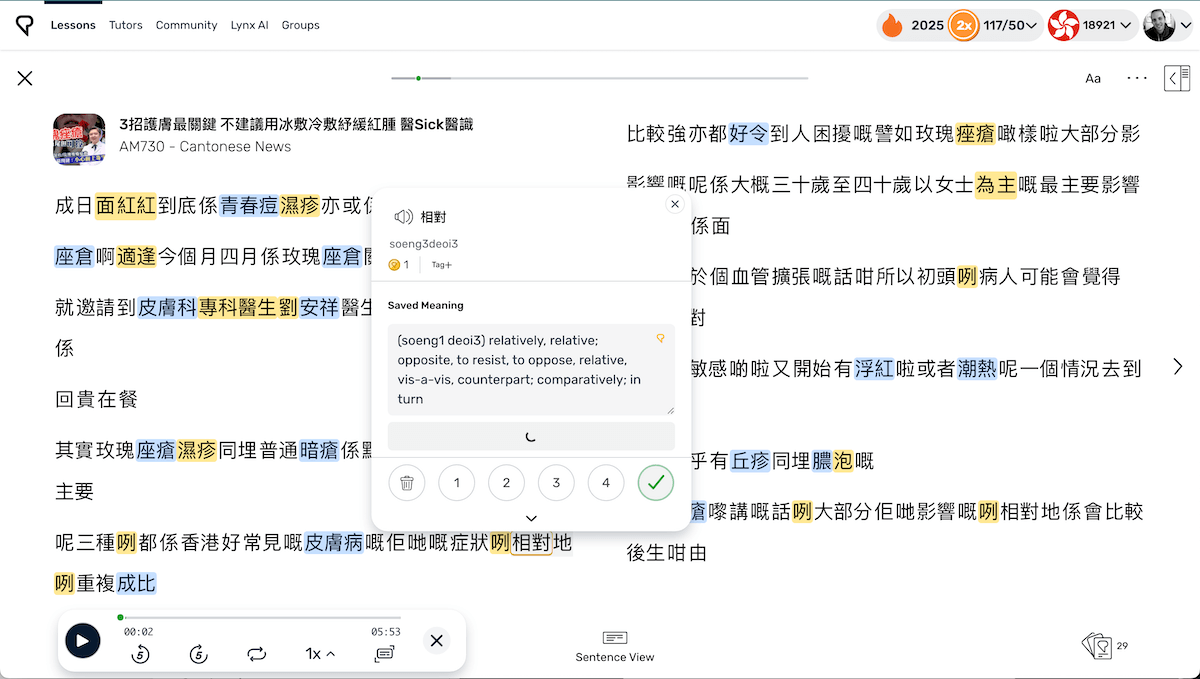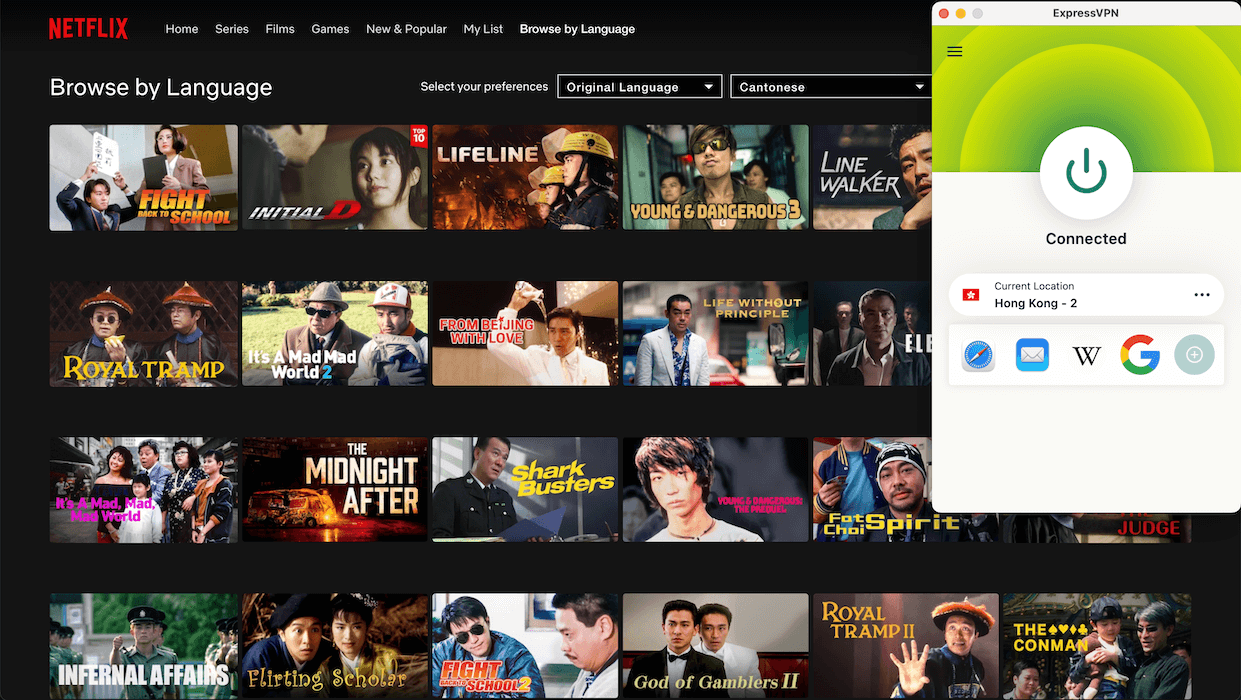7 Best Cantonese Apps, Courses and Tools for Intermediates
This post contains affiliate links. I may earn a commission on purchases made through links in this post. Read full affiliate disclaimer here.
Cantonese is a challenging language, and reaching high-level fluency takes some serious dedication. So if you’re here looking for guidance on your journey—you have my respect.
The lack of resources—unlike the abundance for languages like Spanish, Japanese, and Mandarin—definitely adds even more to the challenge. Since we as Cantonese learners don’t have those same luxuries, we have to come up with creative solutions to get the same learning outcomes. This becomes especially clear once we move past the beginning stages and toward intermediate and advanced territories.
Not to worry though! Though resources are limited, enough quality tools exist to reach Cantonese fluency if you just use them strategically and consistently.
Over nearly 8 years of scouring the web for resources to improve my own Cantonese, I have found the 7 best resources for intermediate Cantonese (which also work like a charm for advanced learners).
From immersion boosters like VPNs, to courses that crack open listening comprehension, apps for drilling speaking flow, reading apps, and platforms for conversation practice. For each one, we’ll do a rundown of key features, pros/cons, why it crushes specific Cantonese hurdles, and how it has leveled up my own Cantonese skills.
(if you’re still a Cantonese beginner, see my post: How I Learned Cantonese From Scratch - Part 1 (Year 1) which covers getting started)
Apps, Courses, and Tools for Cantonese Listening Comprehension
Many might think reading is the most challenging part about Cantonese. It’s actually not, it’s listening comprehension. Due Cantonese’s breakneck speed, snappy words, oddball slang, and quirky idioms make reaching that point—where you can comfortably follow Stephen Chow movies or TVB dramas—take serious time and patience.
Having said that, the reward of unlocking your listening is incredible and unlike any other language I’ve learned.
These next three tools are my favorites for breaking through listening barriers. They can also be used in succession if you’d like.
Cantonese Conversations (StoryLearning)
Note: This course recently got rebranded as ‘Immersion Lab: Cantonese’. But since a lot of people still know it as ‘Cantonese Conversations’ that’s the name I’ll be using here.
Best for: Bridging the gap from beginner to intermediate and understanding fast, colloquial Cantonese speech
Pricing: $97 (lifetime access)
Payment model: One-time purchase
Free Trial: None, but a 30-day money-back guarantee.
Key Features:
29 conversations (12 video, 17 audio-only), 3-4 minutes each
Features native Hong Kong speakers using local slang and colloquialisms
Transcripts with Jyutping romanization, Chinese characters, and English translations
All content is downloadable
Pre-made Anki vocabulary deck (with key vocab from each conversation)
Basic guidelines for how to use the course
Lifetime access
Pros:
50% more affordable than other Storylearning conversation courses
Videos enhance comprehension through facial expressions and body language
Authentic Hong Kong street speech patterns for real-world language usage
Targets critical A2-B1 gap where resources are lacking
Engaging and honest conversations about Hong Kong life, relationships, and expat experiences
Pre-made flashcard deck saves time
Builds strong foundation for understanding native media
Manageable 3-4 minute conversation lengths
Cons:
Audio quality is dated (course hasn’t received major updates since 2017)
Transcripts combine Jyutping, Chinese, and English in one cluttered format, which makes following along with only jyutping less convenient
Limited guidance on how to use the course material
Lacks motivational support compared to interactive courses with regular check-ins
No subtitles in videos - you need to read along with separate transcript
Why this course matters for Cantonese: One of the most intimidating aspects of Cantonese is understanding rapid, colloquial speech. Short words—combined with locals use of slang and expressions, spoken at lightning speed—creates a real gap from beginner materials to native content and conversations. Even some so-called intermediate resources don’t really prepare you for real world language or help you reach intermediate Cantonese listening ability.
Cantonese Conversations is a course by StoryLearning that was created specifically to bridge this gap. Creator Olly Richards faced the same comprehension challenge when he was learning Cantonese, finding little to no resources to transition from beginner to intermediate levels. So he decided to make his own material, which this course is a result of. It features genuine conversations between natives, using real language that you’ll actually encounter on the streets of Hong Kong, including Hong Kongers refreshing straightforwardness and honesty.
The lack of major updates for 8+ years is a bummer, since the audio quality—while not terrible—is a bit dated compared to today’s standards. Despite that, the course still fills an important need for Cantonese learners and is an effective A2-B1 bridge. The raw, challenging material develops your listening skills (and speaking indirectly) by throwing you into authentic Hong Kong speech, with the transcripts and key vocab lists to facilitate the process of understanding these interactions.
Time frame: 30-45 minutes daily for about 90 days (if you’re at A2-B1 level) will give your listening comprehension a significant upgrade.
Bonus resource: I created my own guide on how use Cantonese Conversations, based on the practical 7-step process I developed and successfully used myself. Download it for free: Download ‘7 Steps to Master Cantonese Conversations’.
For more on Cantonese Conversations, see my full review:
Level Up Your Listening (Refold)
Best for: Systematic methods to master listening comprehension for intermediate and advanced learners
Pricing: $147 (lifetime access)
Payment Model: One-time payment
Free Trial: None, but a 90-day, no questions asked, money-back guarantee
Key Features:
28-day structured program with daily assignments
15 video lessons, 15 tutorial videos, daily text lessons
Multiple proven listening techniques: intensive listening, multipass method, transcription, chorusing
Refold tracking app for homework and tracking progress
Weekly guided reflections and progress check-ins
Private Discord community with coach support
Methodology works for any language and content
Pros:
Systematic 28-day program builds sustainable listening habits with clear daily assignments
Teaches advanced techniques essential for Cantonese: intensive listening, multipass method, sentence mining, transcription
Method transfer to any future languages you learn
Expert instruction from experienced language coaches with active Discord community support
Clear tutorials make tools and strategies accessible
Demystifies listening improvement, making it a concrete practice
90-day money-back guarantee removes risk
Cons:
Requires significant time commitment (1.5 hours daily for 28 days)
Learning multiple tools may be challenging
Heavy emphasis on TV show content may not suit all preferences
Success depends on strong self-discipline and consistency
No Cantonese-specific materials (minimal pairs decks, content database)
Why this course is especially crucial for Cantonese: No matter how much you listen, Cantonese media still feels frustratingly unclear. Breaking through this plateau feels impossible. With very little material available to help us, it’s difficult to know how get breakthrough in our listening skills.
Level Up Your Listening, created by Refold’s experienced language coaches, is a course that teaches you how to systematically improve your listening, with specific techniques that accelerate comprehension—like intensive listening (breaking audio into manageable chunks), “multipass”, transcription, and sound recognition. You’ll also learn how to use powerful listening tools like Audacity and asbplayer. The daily homework assignments follow a clear progression, using Refold's own tracking app to log your practice and show when assignments are complete.
While Cantonese isn’t an official language for the course the methodology perfectly. The only things you miss out on are the ‘minimal pairs’ anki deck and content database. However, the Refold coaches gave me some excellent Cantonese content recommendations when I took the course.
I consider this course especially valuable for Cantonese—because of how challenging listening is, and how it provides practical solutions that you’ll need to crush listening barriers. The strategies can be applied to any content and to any future languages you learn, increasing it’s overall value.
Time frame: 1.5 hours daily for 28 days (includes all homework assignments)
For more on this course, see my review and personal experience of Level Up Your Listening:
asbplayer
Best for: Interactive video learning and easy flashcard making from content you watch
Pricing: Free
Key Features:
Chrome extension for interactive subtitles with hover dictionary lookups (Yomitan integration
One-click Anki flashcards with audio, screenshot, sentence, and target word
Intensive listening tools: auto-pause after sentences, speed control, condensed playback
Manual subtitle syncing and custom subtitle support
Multi-platform: YouTube, Netflix, Disney+, Amazon Prime, local video files
Pros:
Transforms any subtitled content into interactive learning material
One-click flashcard creation with original audio, perfect for learning vocab from TV shows
Makes intensive listening and sentence mining effortless
Smooth streaming performance with customizable settings (no feature bloat)
Completely free (with no limitations)
Cons:
Initial technical setup requires time and patience (setup tutorials are essential for most users)
Disney+ subtitles need manual re-syncing each session
Learning confined to Chrome browser on desktop
Simple interface may feel basic compared to polished apps
Why asbplayer matters for Cantonese: Learning from streaming content is a great way to improve listening comprehension, but pausing to look up words is slow breaks the flow, and you forget the words as soon as you look them up.
asbplayer is every Cantonese learner’s answer to both. It takes streaming video content and turns it into interactive Cantonese video learning material. Hover over subtitles to look up words, create one-click multimedia Anki flashcards that include the audio, screenshot, sentence, target word, etc. You can also use auto-pause for intensive listening (i.e. re-listening to sentences you don’t understand) and slow down the audio, among other features.
While there are paid alternatives, asbplayer is still my number one recommendation because of its reliability and smooth workflow. You’ll just need to get through a bit of a technical setup—but once past this, it’s fairly easy to use.
Although not mandatory, taking the course Level Up Your Listening was the turning point for me. While I had used YouTube tutorials (see links below) it wasn't until I took the course that everything clicked and I was able integrate asbplayer into my Cantonese learning routine.
Time frame: Using asbplayer for 30-45 minutes daily (plus 10-15 minutes for flashcard review) for intensive listening and sentence mining can significantly improve your listening comprehension in 2-4 months. Combine this with 1-2 hours of subtitle-free daily listening in a relaxed state to get the most out of it.
For easy setup, I recommend watching these Refold tutorials:
The BEST video player for language learning? - ASBplayer Tutorial
The ULTIMATE Sentence Mining Tutorial - How to make your own Anki cards
Tip for Cantonese video content:
CantoCaptions - YouTube channel with word-for-word subtitles
Refold Cantonese Discord community - Content recommendations and free access to accurate Cantonese subs produced by members
Get My Free Language Learning Guide Intuitive Language Secrets!
Learn the foundations of how to learn any language intuitively in my free guide—download now by clicking below!
Download Free GuideCantonese Speaking Practice
Cantonese is mainly a spoken language, which makes early speaking practice even more important than in other languages. To speak well requires navigating different tone combinations and learning to produce the language with confidence and flow.
The next two are my favorite tools for building Cantonese spoken fluency and conversational skills.
iTalki
Best for: Conversational practice through one-on-one lessons with native speakers
Pricing: $14 - $55 /hour lesson (varies greatly depending on the teacher).
Discount: Many teachers offer lesson package discounts
Lingtuitive bonus: $10 extra lessons credits (applied after your first purchase)
Free Trial: No, but most teachers offer discounted 30-minute trial lessons
Key Features:
One-on-one video lessons with native speakers
80+ Cantonese teachers to choose from
Flexible scheduling with teacher availability calendars
Multiple video options (iTalki Classroom, WeChat, QQ, Zoom)
Pay-per-lesson or lesson packages
iTalki app for lesson reminders and teacher communications
Pros:
Large selection of teachers from Hong Kong and mainland China
No subscription required - pay only for lessons you take
Easy booking, rescheduling, and cancellation
Up to 3 discounted trial lessons to help find the right teacher
Perfect for learners who need accountability and interactive practice
Lesson reminder notifications directly from iTalki app
Cons:
Teacher quality varies significantly - you might need to try a few
Must purchase non-refundable iTalki credits upfront
iTalki classroom often has stability issues, causing calls to disconnect
Platform interface feels cluttered and unintuitive
Lesson requests need teacher approval (not always instant)
Why iTalki is highly useful for Cantonese: Finding opportunities for quality Cantonese conversation practice is a challenge. And without practice with real people, speaking easily feels intimidating, and we become tongue-tied.
iTalki solves this by connecting you with 80+ native speakers for one-on-one Cantonese lessons. Unlike language exchange partners, these sessions provide focused speaking practice with personal feedback, flexible scheduling on your terms, and no need to split the time speaking your native language. It’s also a great way to learn new vocab and slang straight from a native, while improving your Cantonese speaking ability.
People who thrive on accountability will find regular lessons especially valuable. Some teachers might even have created their own learning materials, which might be helpful due to the lack of quality learning materials at intermediate and advanced levels in Cantonese.
Finding the right teacher: You might need to try 2-3 to find a good match. Look for a teacher you have natural chemistry with and who guides you to express yourself without correcting every minor mistake - this approach builds confidence and fluency faster.
Budget alternatives: Language exchange apps (HelloTalk, Tandem) offer free Cantonese speaking practice but require significant time investment - you'll spend half your sessions speaking your native language. Finding the right practice partner can also be challenging, though they can be great for those who enjoy the social aspect.
Time frame: With weekly lessons you’ll notice a big difference in your Cantonese speaking and conversational ability in 2-3 months - provided you keep learning daily in-between lessons.
For more on iTalki and language lessons:
Glossika
Best for: Drilling sentence structure and improving speaking flow through automatic repetition
Pricing: $16.99 (Basic plan - one language). $30.99 (Pro plan - all 60+ languages)
Annual discount: $13.33 - $25 /month (students get additional discount on Pro plans)
Free trial: 7 days, or get an extended 30-day free trial exclusively through Lingtuitive
Key Features:
Listen-and-repeat spaced repetition method (with optional recordings for self-assessment)
3,700+ sentences and 5,000+ words in Cantonese
Hong Kong accent native speaker audio (male)
Progress tracking and spaced repetition scheduling
Customizable settings and entry test to match to your level
Jyutping or Yale romanization plus Chinese characters
Mobile app
Pros:
High-quality, clear audio
Builds speaking fluency through muscle memory
Improves natural word order intuition as well as listening comprehension
Easy to do while multitasking - e.g. house chores
Guided learning - just follow the structured repetitions
Spaced repetition optimizes review timing
Efficient tool for 'language stacking' (i.e. using a non-native base language to improve/refresh at the same time)
Cons:
Higher monthly cost than some other apps
Reviews pile up if not done daily
The method of constant repetition might not suit all people
Contains some inaccurate sentences
Can feel monotonous after months of use
Why Glossika is effective for Cantonese: Speaking Cantonese is challenging because it requires navigating pronunciation, tone combinations, and correct word order all at once. While practicing real conversations with native is ideal, it’s tough to get enough repetition to build the muscle memory you need for fluent speech.
Glossika Cantonese fills this gap with a “gym-like” approach. You’ll hear an English sentence, then the Cantonese version, followed by a pause to repeat it out loud. This simple cycle builds intuitive grammar patterns, improves listening skills, and develops the muscle memory for effortless speech. It’s one of the few guided approaches to learning Cantonese - you just follow along with the structured practice, reviewing past sentences while adding new ones.
Although its repetitive nature might turn some people off, it's still an effective and unique tool for Cantonese fluency practice—it builds the ability to think and produce complete sentences, not just individual words, which is key for fluent speech.
Time frame: 30 minutes daily for 3-6 months will give you a significant speaking fluency boost while internalizing Cantonese speaking structures.
For more on Glossika:
I Finished ALL (3,800) Finnish Glossika Sentences - Was it Worth it? [Review]
Has Glossika Improved My Finnish Grammar? (also touches on Glossika Cantonese)
When you click the link, it will say “Start 7-day Free Trial,” but you’ll actually get a full 30-day trial.
After signing up, you can check the exact duration under “Plan & Billing.”
Cantonese Reading Skills
Reading Chinese is a unique challenge for Cantonese learners: most written text uses Standard Written Chinese (SWC, Mandarin essentially) rather than spoken Cantonese. This means that while there is vocab overlap (around 60-70%), reading mainly builds formal and technical vocab rather than the colloquial language you hear in native media and conversations.
Texts written in spoken Cantonese do exist—web novels, some books, and transcripts—they are just way less common than SCW.
While you can reach conversational fluency without reading Chinese, I think literacy becomes increasingly valuable as you get more advanced. Plus, working comfortably with Chinese subtitles opens up way more content for learning and makes tools like asbplayer even more effective.
LingQ
Best for: Vocabulary expansion and reading comprehension
Pricing: $14.99/month
Annual Discount: $10.00/month (33% off), 2-Year Plan: $8.99/month (40% off)
Lingtuitive Discount: Extra 5% off annual plans with code b_12lingtuitive (final price: $9.44/month or 37% off)
Free Trial: 20 free LingQs, or 100 extra LingQs through Lingtuitive's extended trial
Key Features:
Import any Chinese content (e-books, articles, YouTube videos)
Growing Cantonese content library with audio support
Color-coded word tracking shows vocabulary progress visually
AI-powered contextual definitions and text simplification
Create multiple audio playlists for on-the-go listening practice
Sentence-by-sentence reading mode for complex texts
Detailed statistics tracking (words learned, reading time, progress metrics)
Cross-content vocabulary tracking remembers words across all materials
Pros:
Import any content (e.g., finance books, fantasy novels, news)
Color-coded system makes vocabulary progress tangible and motivating
Audio sync helps connect reading and listening skills
AI definitions provide highly accurate, context-appropriate translations
Text-to-speech reinforces pronunciation when clicking words
‘Sentence View’ makes complex text more manageable
Learn multiple languages (access 50+ languages on one subscription)
Cons:
Frequent inaccurate word parsings in Cantonese
Feature-heavy interface requires learning curve for new users
Settings options can be overwhelming for learners preferring simplicity
YouTube integration doesn't allow clicking subtitles during video playback (only when listening to the audio without the video)
Some e-books may require conversion before importing
Why LingQ matters for Cantonese: Reading in Chinese means learning the meanings plus pronunciations of thousands of characters. Quite a time-consuming task. How do you get used to reading such a complex script?
LingQ makes reading Cantonese accessible by making any text interactive and clickable. The color-coded highlighting system shows your progress: new words appear blue, words you're learning turn yellow, and known words stay white.
LingQ’s strength lies in learning vocabulary through context instead of memorizing individually. The app tracks encountered words across all content you read in the app, so the vocab naturally reinforces and build upon itself. The best part about LingQ is that you can use any Cantonese or Chinese content to learn from, including e-books, YouTube, news articles.. Learning through what truly interests makes the process more engaging and makes you learn better.
The word parsing for Chinese in LingQ isn't perfect for imported content, but I think it’s still the best Cantonese reading app. The comprehensive progress tracking help with long-term motivation as you watch your vocabulary numbers grow over months (even years) of consistent usage, while diving deep into content you truly find interesting.
A word of caution: Without the right settings for Cantonese, LingQ can give an illusion of having stronger reading skills than you actually do (i.e. turn off always displaying jyutping transliteration - see my ‘LingQ Settings blog post’ down below for specific instructions).
Time frame: Learning to read in Chinese takes time and LingQ isn’t a quick win tool, but it pays off in the long run in a big way. Read daily for at least 30 minutes and you’ll see a difference in 4-6 months.
For more about LingQ:
How to Read Books with LingQ: Complete Beginner's Guide (everything you need to read with LingQ, how to find and import books, and more.)
The Ultimate LingQ Settings Guide: Complete Setup Tutorial (copy-paste settings for fast setup)
The Smartest Way to Learn to Read & Write Chinese (how to start reading Chinese from scratch)
Unlock Cantonese Content
Reaching a high level of listening comprehension requires thousands of hours of immersing in authentic Cantonese content. This is why finding engaging content that you actually want to watch becomes so important—it needs to something you want to do and not a chore. If you live outside Hong Kong, the next tool unlocks the content libraries you need.
ExpressVPN
Best for: Accessing geo-restricted Cantonese content for immersion
Pricing: $12.99-19.99 /month (depending on plan)
Annual Discount: $4.99 - 8.99 /month. 2-year plans: $3.49 - 7.49 /month
Free Trial: 7-day (via app) + 30-day money-back guarantee
Key Features:
Access to 3,000+ servers in 105 countries for unlocking regional content
Compatible with major streaming platforms (TVB, Viu, Netflix, HBO Max, Disney+, Amazon Prime)
One-click connection with intuitive interface
Support for up to 10 devices simultaneously
Military-grade encryption with strict no-logs policy for privacy
Pros:
Unlocks Hong Kong-exclusive platforms (free Viu originals/dubs, TVB.com streaming)
Significantly expands Cantonese content library across platforms like Netflix, HBO Max, Disney+ (including dubs and browse-by-language Cantonese filtering)
Fast, buffer-free streaming with simple one-click setup
Works across all devices (phone, computer, smart TV, tablets)
Risk-free testing with 7-day trial and 30-day money-back guarantee
Cons:
Not needed if you already live in Hong Kong
Monthly cost adds to language learning budget
May need to try different servers if your first choice doesn't work with certain platforms
Connection speed can vary by server distance and load
Why ExpressVPN matters for Cantonese: As intermediate Cantonese learners we need massive listening input to break through comprehension barriers, but geo-restrictions lock out 90% of authentic material. Outside Hong Kong, you can't even filter Netflix by Cantonese or hit Viu's gold mine of HK dramas and Cantonese-dubbed Korean dramas and Japanese anime.
ExpressVPN seamlessly flips that: Connect to a HK server, and suddenly Stephen Chow comedies, Jackie Chan classics, and ViuTV shows are available. It also unlocks Cantonese dubs on familiar Western content like cartoons, family friendly movies (like Harry Potter), and kids’ shows on popular streaming platforms.
For learners who enjoy Hong Kong dramas and variety shows, free TVB streaming might be what you gravitate toward. Others might prefer the expanded Cantonese content library of Netflix and HBO Max. Disney Plus already has a fair amount of Cantonese-dubbed TV shows outside Hong Kong, but even their library expands with a HK connection. No matter what platform you choose, ExpressVPN provides tons of authentic Cantonese media access that otherwise wouldn’t be possible.
Tip: To unlock Cantonese content using Viu (it’s free with commercials), type 粵語配音 for Cantonese-dubbed content or 廣東話 for Cantonese audio content (selection expands significantly when you search using Chinese, compared to English).
Time frame: 1-2 hours of daily streaming, watching in a relaxed but focused state, and you’ll see comprehension jumps in 3-6 months.
For more on immersion hacks like VPNs:
How to Choose the Right Tools for Your Cantonese Goals
Each of these intermediate Cantonese resources targets different skills. Choose the one that best aligns with your current challenge at this stage of your Cantonese journey.
Budget-conscious? Start with 1-2 tools that address your biggest frustrations, then add others as you progress. Common combinations include one for listening comprehension, one for speaking practice, and one for reading skills if that's a priority.
Just finished beginner materials? → Cantonese Conversations
Want systematic strategies to break through listening plateaus? → Level Up Your Listening
Can't follow native Cantonese TV and movies? → asbplayer + ExpressVPN
Want to read Chinese effortlessly? → LingQ
Need to build speaking skills?
My recommendation? While tools like iTalki and LingQ have been invaluable for developing my speaking and reading skills, I found Level Up Your Listening to be the biggest game-changer for my Cantonese journey. Because listening is both the most important skill (if you want to have real conversations with people) and also the most challenging aspect of Cantonese. It taught me how to learn effectively using any authentic media, which opened up endless possibilities—a crucial skill since we have to come up with our own materials and learning path to reach high levels of Cantonese fluency.
What's your biggest intermediate Cantonese challenge right now - speaking confidence, listening comprehension, or reading? Let me know in the comments below!
Related posts:
Comprehensive reviews:
Guides & How to’s:
Personal experiences:

